It’s common knowledge: in Venice, you pay an entrance fee almost everywhere. Even in churches: if in the main cities of Italy it is usually the larger and more complex to maintain churches that charge an entrance fee, in the lagoon capital the ticket is paid in almost all the main churches. In recent years, however, formulas have been invented to make the disbursement less burdensome: some churches, for example, have come up with a “ticket + guide” formula (for a small surcharge you get a publication that explains in detail the building you are about to visit), or a pass (the “Chorus Pass” that allows you to see all the buildings of worship of the Association for the Churches of the Patriarchate of Venice with a ticket of only 12 euros: there are fifteen churches that are part of the circuit).
Of course, many people may dislike paying to see a church, but it is also necessary to understand the reasons why: the churches of Venice are rich and delicate, they are spectacular treasure chests of works of art visited every year by millions of tourists and in need of continuous maintenance (the conformation of Venice and its climate make everything more difficult and more expensive than in the rest of Italy). However, there are also some important buildings that can be visited freely, and some of these are among the city’s main and most famous churches. So for our “five places in two days” format, let’s take a look at five churches in Venice where you don’ t have to pay admission to visit for free!
The basilica of Santa Maria della Salute, just a few steps from the Punta della Dogana, is one of the most iconic and recognizable buildings in the city, and it is also one of the masterpieces of 17th-century architecture, not only in Venice. Its construction began in 1631, designed by Baldassarre Longhena, one of the greatest architects of the 17th century, and the consecration was held on November 9, 1687. The main dome (so called because there are two domes) unmistakably marks the skyline of Venice. The octagonal building preserves important paintings such as Titian’s Descent of the Holy Spirit (and more of his works can be found in the sacristy), Luca Giordano’sAssumption, sculptures by Tommaso Rues (who also made the statues of the four evangelists that decorate the facade), works by Tintoretto, Palma il Giovane, Padovanino, and other great Venetian artists.
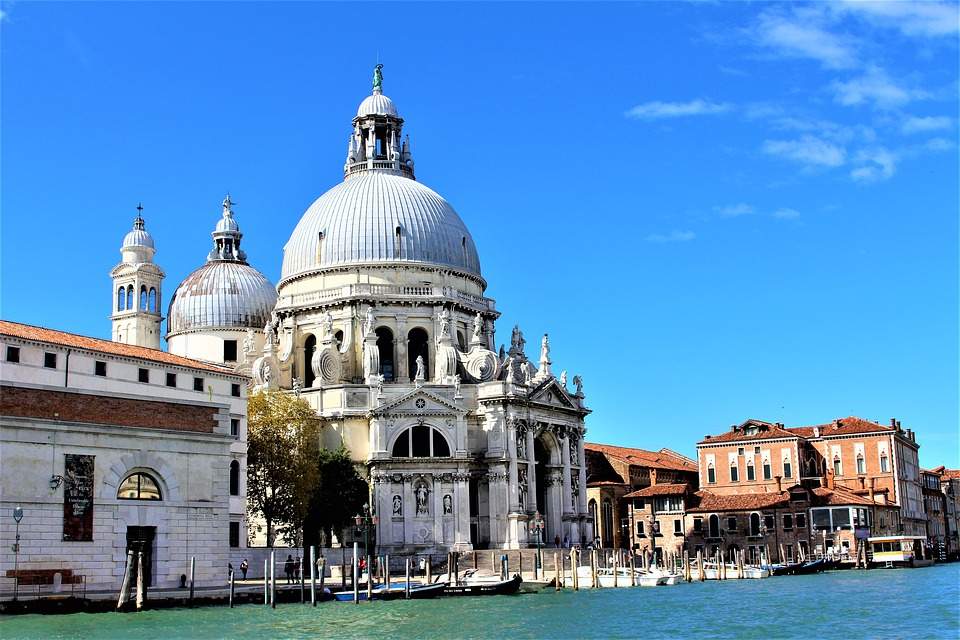 |
| Santa Maria della Salute |
This is a small church, generally little visited despite the fact that it is located on one of the city’s busiest streets, just a few steps from the Rialto Bridge, along the route that leads from the latter to the station and the parking lots of Piazzale Roma. The building itself, a Renaissance church designed by the architect Mauro Codussi (who disappeared in 1504 before he saw the completion of the work, which lasted from 1495 to 1525), is not so much distinguished by its appearance as by the three great masterpieces it holds inside: Giovanni Bellini ’s altarpiece with Saints Christopher, Jerome, and Louis of Toulouse, Sebastiano del Piombo’s St. John Chrysostom Alt arpiece, and Tullio Lombardo’sCoronation of the Virgin among the Apostles, a marble altarpiece.
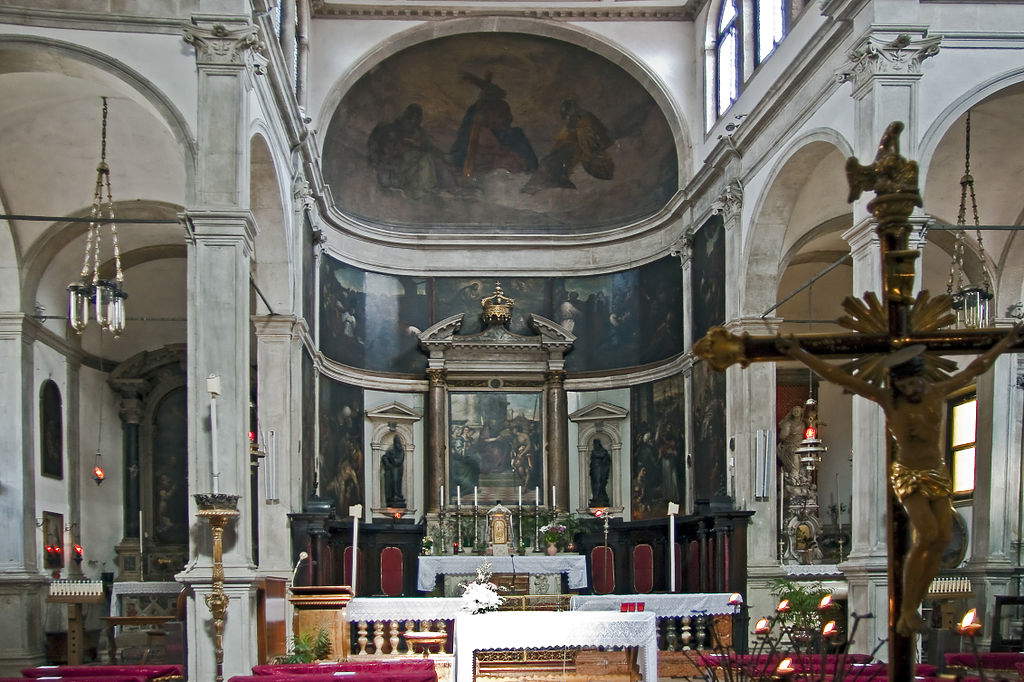 |
| Saint John Chrysostom. Photo by Didier Descouens |
In contrast to St. John Chrysostom, the church of San Moisè is instead usually full of tourists mainly for two reasons: its location (it is a short walk from St. Mark’s Square), and its flashy appearance. In fact, the church is characterized by its spectacular facade built in 1668 to a design by Alessandro Tremignon, who envisioned one of the most exuberant facades in the entire city (so much so that it was even criticized for its excesses). The project was made possible thanks to a substantial grant left by two brothers, Vincenzo and Girolamo Fini, who had recently become part of the Venetian nobility and were eager to leave a very marked mark on the city. No less spectacular is the interior: it too retains Tremignon’s imprint in the high altar (dating from 1685-1688) and the altar of the Nativity of Mary. Among the works of art preserved are paintings by Tintoretto, Palma the Younger, Girolamo Brusaferro, and Niccolò Bambini.
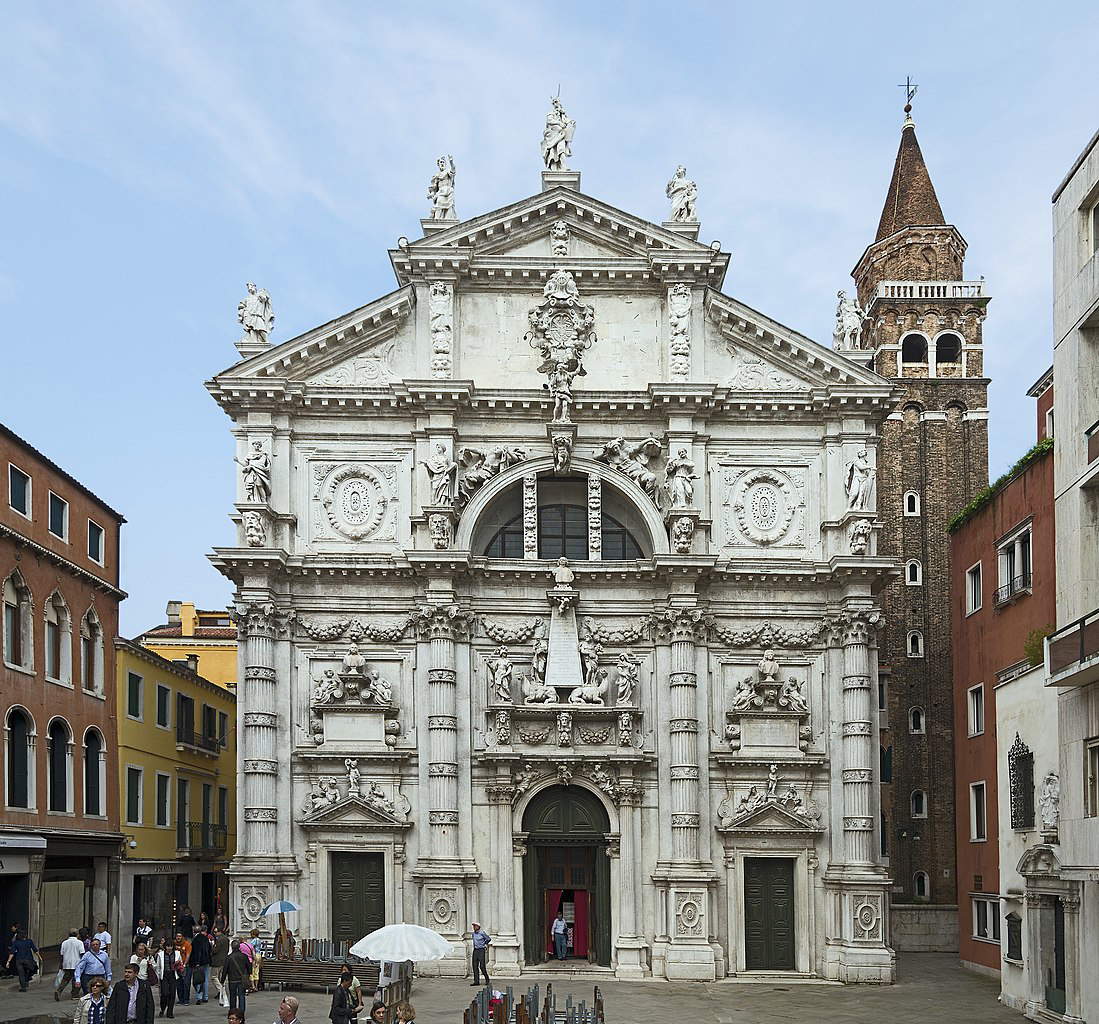 |
| St. Moisé. Photo by Didier Descouens |
Dating from the 13th century, it is distinguished by several special features. Meanwhile, it is one of the few churches in Venice with a facade that has remained unfinished. And then, because inside it houses what is considered the largest oil-on-canvas painting in the world: it is an enormous work that covers the entire ceiling of the church (if you look up, therefore, you will not notice a fresco, but a gigantic work made of forty canvases joined together covering an area of 443 square meters), and depicts the martyrdom and glory of Saint Pantaleon, the titular saint of the church. Its author, Venetian painter Giovanni Antonio Fumiani, who specialized in particularly scenic interventions, took twenty-four years to complete it: from 1680 to 1704. What’s more, visiting the church of San Pantalon also means taking a journey through the history of Venetian art, since all centuries are represented: from the 14th century by Paolo Veneziano to the 15th century by Antonio Vivarini and Giovanni d’Alemagna, from the 16th century by Paolo Veronese and Palma il Giovane to the 17th century by Padovanino and Giuseppe Sardi to the 18th century by Gregorio Lazzarini and Pietro Longhi.
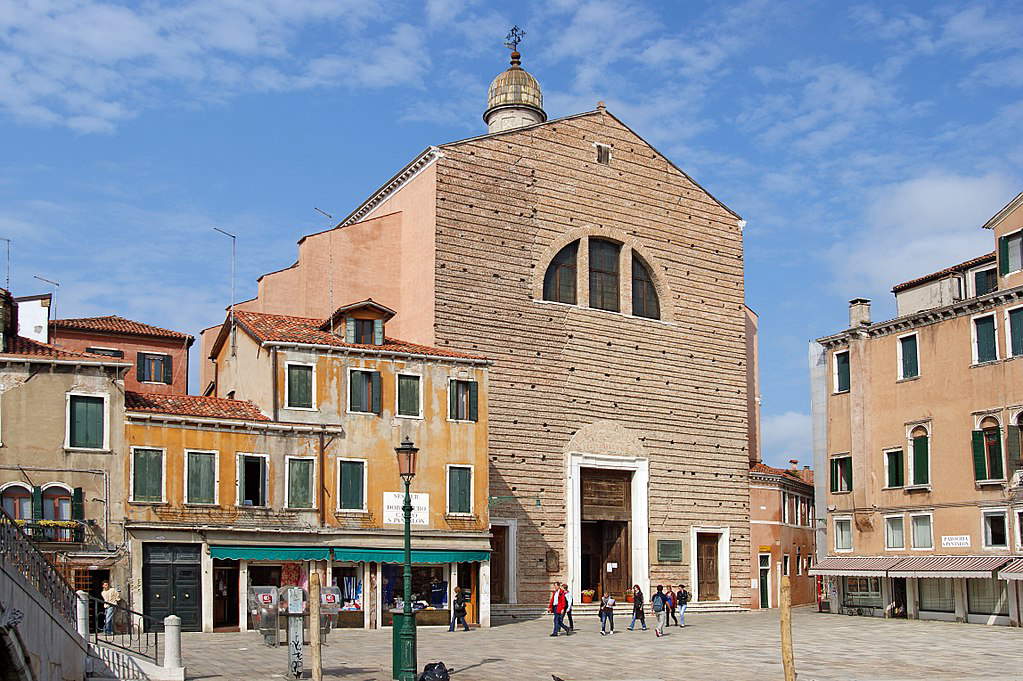 |
| San Pantalon. Photo by Didier Descouens |
The church and its abbey complex occupy the entire island of the same name, which faces St. Mark’s Square. The first monastery, of the Benedictine order, was built in the 10th century, while the present buildings are the result of various construction phases between the 15th and 17th centuries (the premises of the former abbey now house exhibition centers). The church was designed by Andrea Palladio in the 1660s (however, the facade is later). The great Venetian architect did not have time to see it completed (his successor Vincenzo Scamozzi took care of it in the early seventeenth century), but it is nevertheless one of the main buildings of the period in the city. Inside, the basilica of San Giorgio Maggiore holds masterpieces by great Venetian artists, from Vittore Carpaccio to Tintoretto (of the latter, the church preserves the world-famous Last Supper, one of his masterpieces), from Sebastiano Ricci to Palma il Giovane, as well as sculptures by Alessandro Vittoria, Girolamo Campagna, Niccolò Roccatagliata and others.
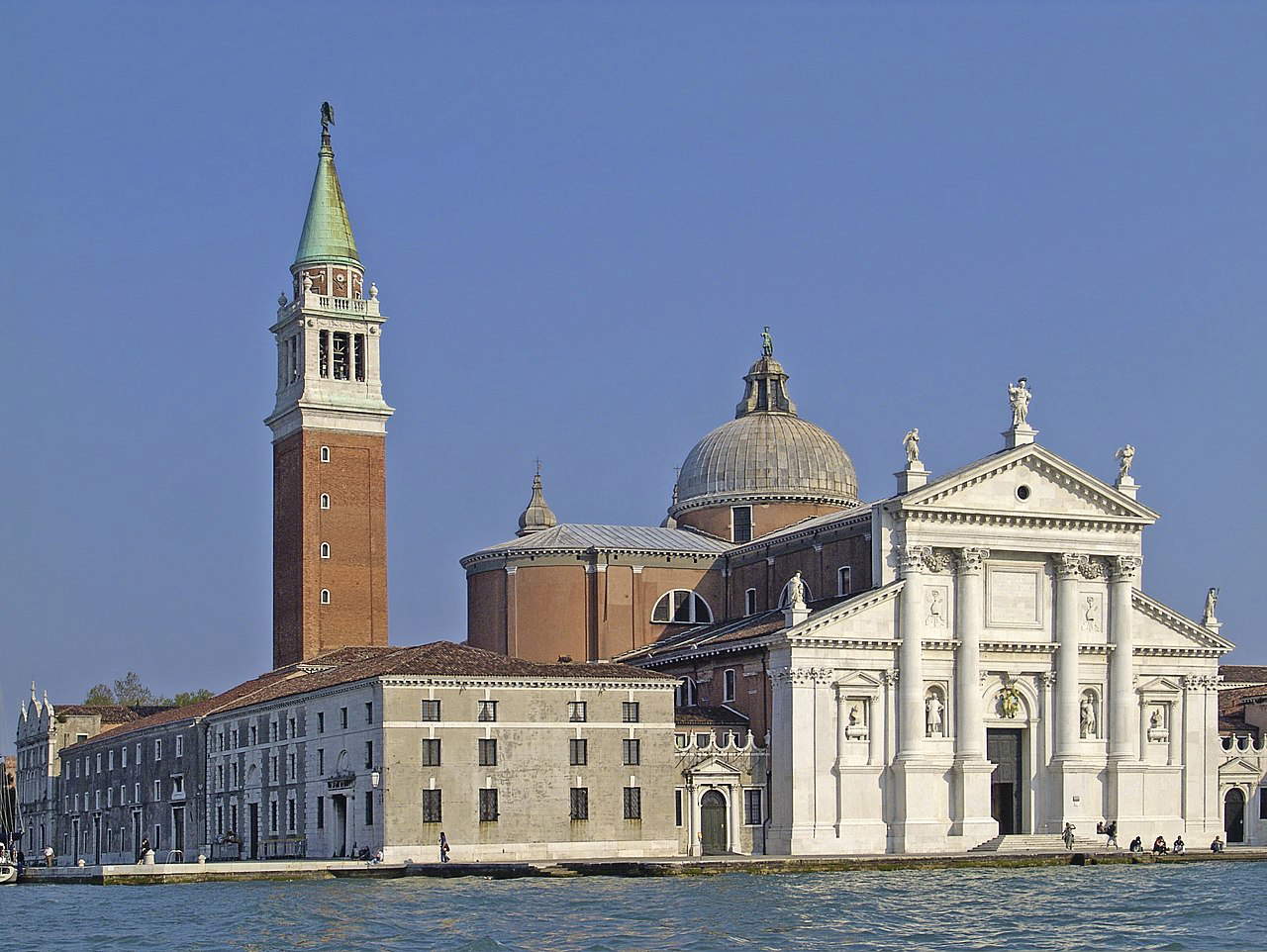 |
| San Giorgio Maggiore. Photo by Didier Descouens |
 |
| Five spectacular churches to see for free in Venice |
Warning: the translation into English of the original Italian article was created using automatic tools. We undertake to review all articles, but we do not guarantee the total absence of inaccuracies in the translation due to the program. You can find the original by clicking on the ITA button. If you find any mistake,please contact us.